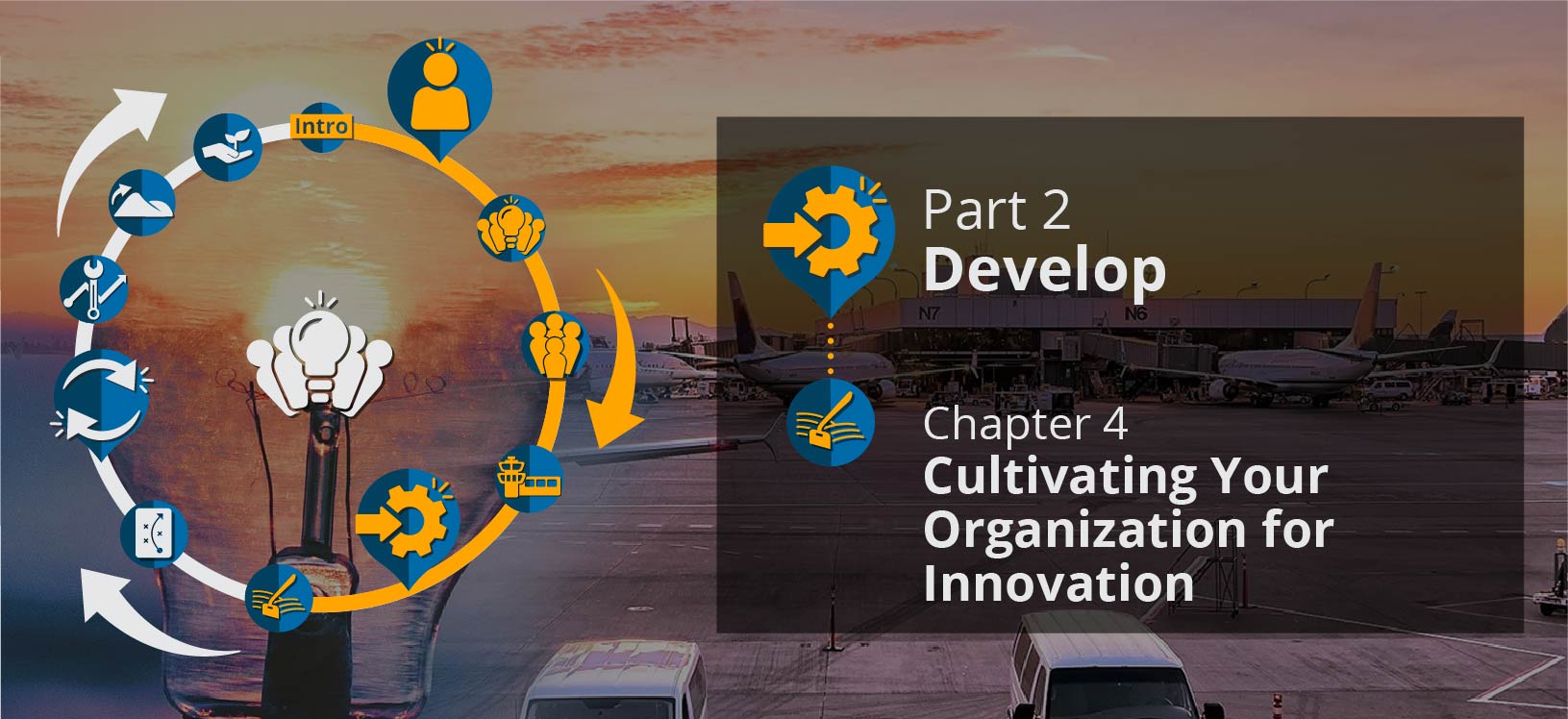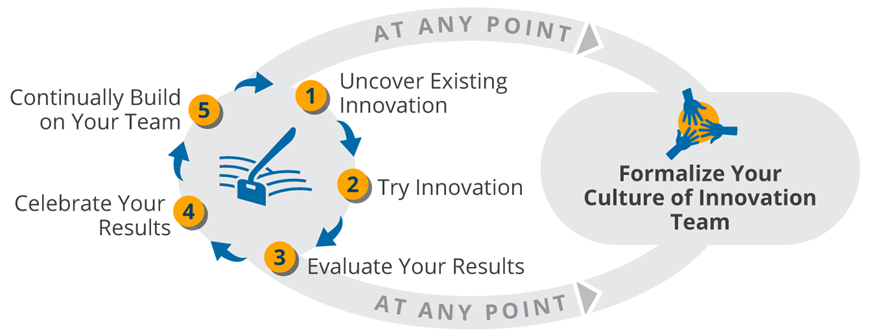

This is a Deep Dive page. Select the chapter for the Fast Track
Formalizing Your Culture of Innovation Team
After you have gone through the innovation cycle a few times and tackled a few challenges, you might start seeing some of the same people from across the organization coming together regularly. This is probably the beginning of your formal culture of innovation team (see Figure D4.2). Make it official-this is your dedicated, accountable team.

Figure D4.2: Formalizing Your Culture of Innovation Team.
This team will be important to have in your efforts to develop an organization-wide culture of innovation. (For more on how your team can develop a formalized culture of innovation program, see Chapter 5.) It is highly recommended that this dedicated team be responsible for helping to drive this culture change. However, be sure that this team is not an exclusive, siloed group (i.e., the antithesis of innovation). It should simply be a microcosm of the organization or a center of excellence that is driving efforts to change the culture and tracking progress along the way.
You may already have an “innovation team,” in which case you could add this cultural element to the group. However, most innovation teams are (rightly) focused on implementing specific innovations. The point of the culture of innovation team is different, as it is specifically focused on developing the culture. If your innovation team is not able to put the right focus on the culture, it may be ideal to have a distinct yet integrated team.
Since your staff and customers form a very diverse group, your culture of innovation team should have comprehensive participation and involvement, including (1) executive-level management, business function leaders, managers, and frontline staff; (2) all generations, from baby boomers to Gen-Xers, millennials, and Gen-Zers; and (3) a mix of genders, races, and various backgrounds. This should extend beyond simple inclusion; the team must promote a culture of innovation for itself, which necessitates a sense of belonging and comradery.
However, understand that this does not involve excluding valuable team members because they do not “check” certain boxes. The ultimate goal is to include feedback and input from the broadest range of perspectives possible. If the members of your team do not cover all perspectives in their own experience and expertise, you should try to fill gaps through interviews with employees and customers of different backgrounds and perspectives.
And remember that, just like the start-up team, this formal team should constantly evolve. Always be looking to cycle people in and out of the group so that fresh perspectives and viewpoints are always present.



